Condensation, damp and mould
On this page you can find advice to help you manage moisture and condensation in your home, as well information about what else could be causing it.
What could be causing damp and mould?
There are many reasons why some homes experience damp and mould and we are here to help.
Some of the most common causes are:
- Missing or faulty extractor fans.
- Leaking pipes.
- Leaking roofs (look out for staining or discolouration of decoration on the walls).
- Blocked or leaking gutters.
- Cracks in walls and around windows.
- Windows that won't open.
- Trickle vents on windows which are faulty or kept closed.
- Blocked or closed air vents.
- Rising damp (only in ground floor homes - look out for staining or discolouration of decoration on the walls and woodwork).
- Soil or waste piled up against an outside wall.
- Blocked pipework or another outlet.
If you are affected by any of these problems, please contact us as soon as possible. Our specially trained teams can come out and investigate what's causing the issue and see what we can do to resolve it.
Moisture and condensation
Most homes get some condensation from time-to-time, but when this is persistent, it can lead to damp and mould.
Condensation occurs when water vapour (moisture) in the air meets a cold surface like a window, tile, or outside wall. It's worse in the winter and will appear on cold surfaces and in places where there is little air circulation, like behind furniture or in the corner of rooms.
Moisture is produced in your home every day, just from cooking, washing dishes, doing laundry, and other everyday activities.
Did you know? A single person sleeping can release up to half a pint of water in the air overnight.
Managing moisture levels in your home can reduce the likelihood of damp and mould.
Managing condensation and preventing mould
Persistent condensation that isn't dealt with will cause mould to grow which can damage your home and belongings and make you unwell. The best way to prevent this is by dealing with condensation where you can.
Here are some simple steps that can help.
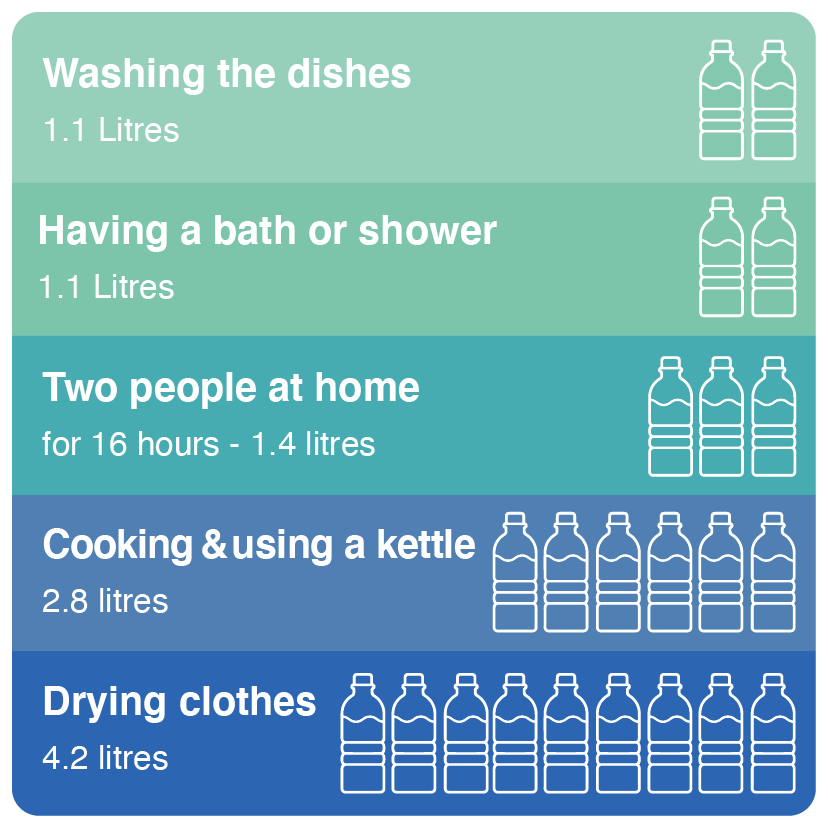
- Cover saucepans with lids when cooking.
- Dry laundry outside if you can. Try to avoid drying washing on a radiator as this creates lots of moisture, very quickly.
- Vent tumble dryers outside unless it is a self-condensing model in which case open the door or window when in use.
- If you’re drying clothes indoors, the bathroom is a good option. A rack which fits over the bath can be a good idea if you’re tight on space on at home. Close the door and open the window or put the extractor fan on whilst you do it. The kitchen could also work if you follow the same steps, but it’s not advised to dry clothes in a bedroom.
- Salt is a cost-effective and efficient way to reduce moisture caused by condensation. Place small pots of salt on your windowsill to soak up moisture build up.
- When you’re running a bath, put cold water in first then add hot – it reduces steam by 90%.
- Also remember to wipe condensation from windows in the morning.
Did you know? Animals also contribute to the amount of moisture in your home - a large dog produces a similar amount to an adult, while fish tanks and other water tanks also make a significant contribution.
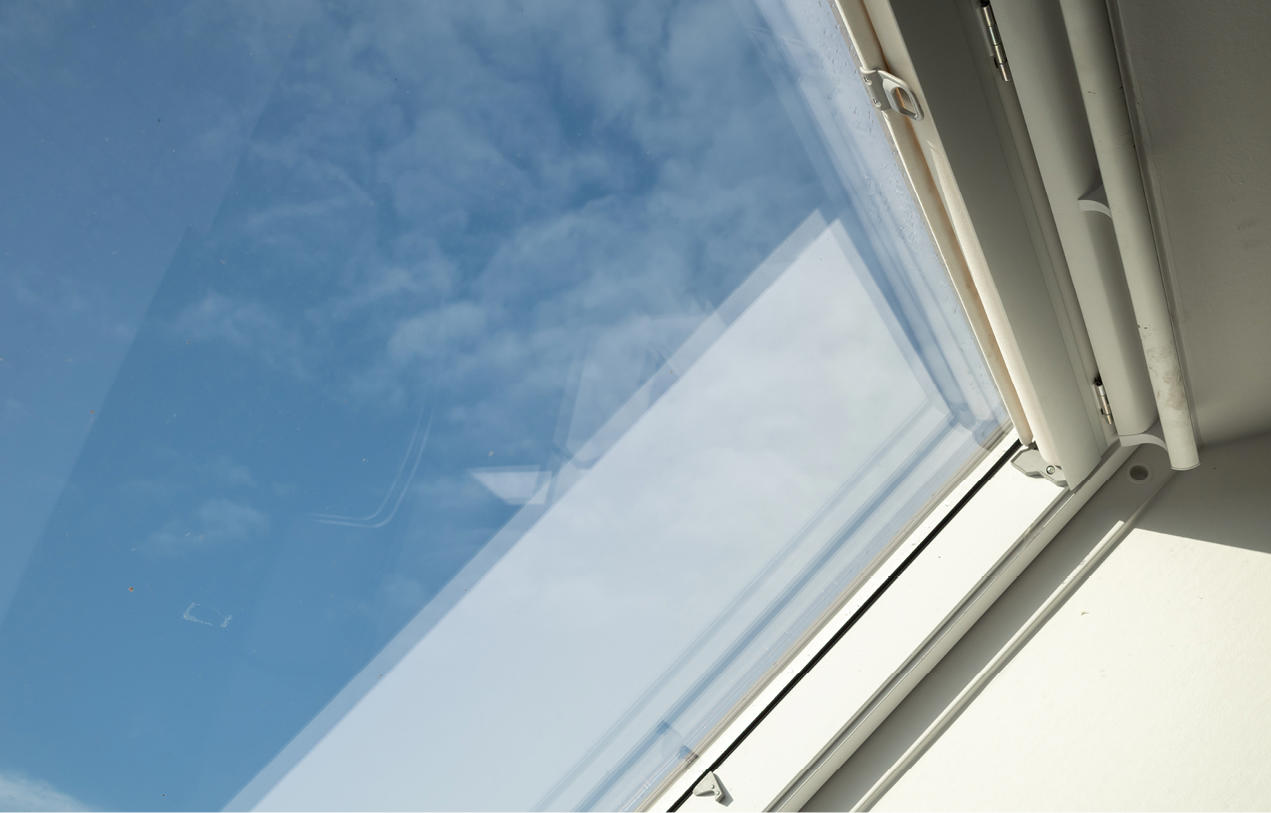
- Open trickle vents on windows – using the night-lock with the key removed.
- Open windows for 20 minutes every morning and after cooking and bathing.
- Use your extractor fan. They're cheap to run (costing £9.38 a year to run a bathroom fan, and £12.58 a year to run a kitchen fan - click here to read more about this), and make a big difference.
- Leaving fans on 'background' mode at all times helps ventilate the room, and ensures the 'booster' mode kicks in automatically during cooking and bathing. If your fans are broken or missing, please report this to us straight away.
- If you can, put free-standing wardrobes and other furniture against internal walls and leave a gap of about two inches between the furniture and wall, so air can circulate around the room.
- If you have a Positive Input Ventilation (PIV) unit ensure it is kept on. If this is broken or faulty please report this to us straight away.
- Ensure brick air vents are kept clear and not blocked off.
- Use a disposable dehumidifier. You can get them from homeware stores for around £3 - £6. A plug-in option would also help to remove moisture from the air.

- Keep your home as warm as you can and at a consistent temperature – we know this is really hard in the current climate. Click here if you're struggling.
- In cold weather, the best way to keep rooms warm and avoid condensation is to keep low background heat on for a majority of the day, rather than short bursts of high heat. This maintains an even temperature and avoids cold surfaces.
- If you don’t have heating on in every room, open doors in these rooms to allow air circulation.
- If you’re not in during the day, if possible, set the timer so that your home is warm by the time you return, to avoid condensation forming.
- If you are unable to heat your home for long periods, it is important to manage moisture by increasing the ventilation of air within your home through extractor fans and opening windows.
- Avoid using portable gas heaters, as they generate large amounts of water vapour that can cause dampness without the sufficient ventilation. They can also create high levels of carbon monoxide which can be incredibly dangerous and present a risk of explosion.
We know heating and keeping your home warm is tough due to the current cost-of-living. If you’re struggling with the cost of heating your home, visit our Energy support page here, for advice and support available to you.
The video below – produced in partnership with the Energy Saving Trust – summarise the steps you can take to manage moisture, condensation, and mould in your home. There is also a Healthy Homes Handbook which you can download here. You can find versions in other languages here or use the Accessibility tool on the website to read it in your chosen language or format.
-

Mould is a fungus that will grow if it is not dealt with.
Tackling mould
If you spot a small amount of mould in your home, you can try to treat this yourself. To kill and remove the mould, regularly follow these steps:
- Carefully remove excess mould with a damp cloth and throw away after. Do not brush mould as this releases spores into the air.
- Use rubber gloves to wipe down affected areas using a fungicidal wash or mould and mildew products in preference to bleach. There are lots of products that you can buy in most supermarkets to kill and remove mould. Always follow the manufacturer’s instructions.
- Once the mould has been removed, redecorate using a good quality fungicidal/anti-mould pain.
- Dry clean or dispose of mildewed clothes and shampoo carpets.
Re-decorating advice
Following a damp proof course
If we or a company working on our behalf visit your home to install a damp proof course or other damp-related works, it's important to follow the steps below once it is complete.
This will ensure you get the best and most long-lasting results from the works.
- Keep the room well-ventilated with the windows open until the area is completely dry.
- Ensure your extractor fans and/or ventilation unit are turned on.
- If/when redecorating an affected area, only use a water-based paint or a non-vinyl emulsion for at least 12 months. This is to allow any remaining moisture in the walls to escape. Any other type of paint or decoration (including wallpaper) could cause the treatment to fail.
- If possible, after 12 months continue with water-based paint or non-vinyl emulsion to ensure the best results.
Following a mould wash
Following a mould wash or stain block to affected areas, you should:
- Keep the room well-ventilated with the windows open until the area is completely dry.
- If the treatment has been carried out in the bathroom, ensure the area is completely dry before bathing or showering.
- Continue to use your extractor fans and/or PIV unit at all times.
Other causes of mould and how to identify different types of damp.
If you’re affected by these, please reach out so we can help.
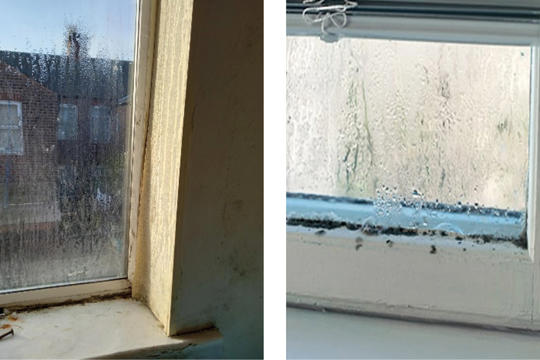
This is the most common type of damp and is caused by moisture in the air (water vapour) inside the dwelling coming into contact with a colder surface, such as a window or wall. The drop in temperature causes liquid water to form on the surface and then soak in. It is usually found in kitchens, bathrooms, the corners of rooms, on north facing walls and on or near windows.
The main cause of condensation is poor ventilation. This type of damp is worse in the winter months due to the damper weather, windows and doors being closed, the drop in temperature and heating being used sporadically.
Signs of condensation problems include:
- Fogging on the window.
- Mould around the window and window sealant which will spread if untreated even to close furniture.
- Smell of mildew.
- Blistering and or flaking paint around the window frame.
- Peeling wallpaper around or under the window.
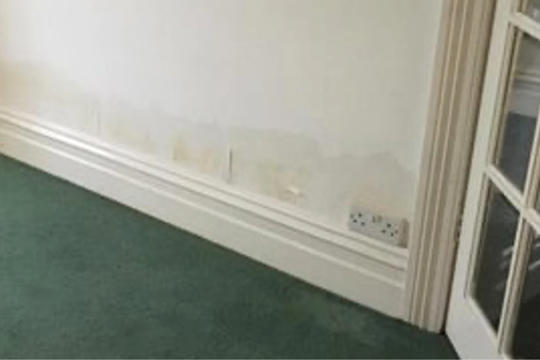
This is a type of damp caused by water rising from the ground into your home. It only affects basements and ground floor rooms and rises 30-60cm above ground level.
Rising damp will be present all year round but is more noticeable in winter. It is uncommon but is generally the result of a problem or fault with the home. Other issues related to this could be a leak under the floor or at the base of a chimney breast.
Signs of rising damp problems include:
- Noticeable tide marks on interior walls which may start low and go up the wall.
- Peeling, flaking, or rotting skirting boards.
- Blistering paint along the tide marks.
- White salts on the affected areas.
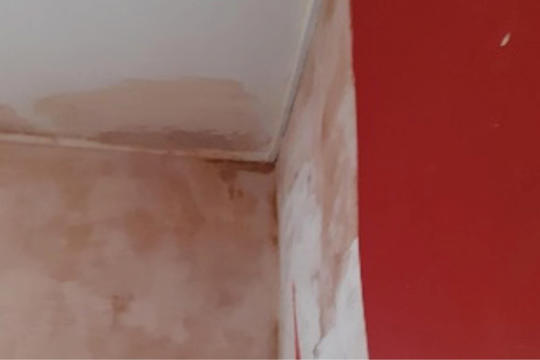
This type of dampness is primarily found on the external walls of the property, due to defects such as missing pointing to the brickwork, cracked rendering or missing roof tiles.
These defects allow water to pass from the outside to floors, walls, or ceilings. Penetrating dampness is far more noticeable following a period of rainfall and will normally appear as a well-defined ‘damp patch’ which looks and feels damp to the touch.
Penetrating Damp problems include:
- Localised damp patches on any wall or ceiling.
- Damp that becomes more visible or worse when it rains.
- Moss/algae on external walls.
If you are affected by any of these problems, please contact us as soon as possible. Our specially trained teams can come out and investigate what's causing the issue and see what we can do to resolve it.
A resident’s guide to condensation
-
The Healthy Home Handbook - English
pdf | 934Kb
